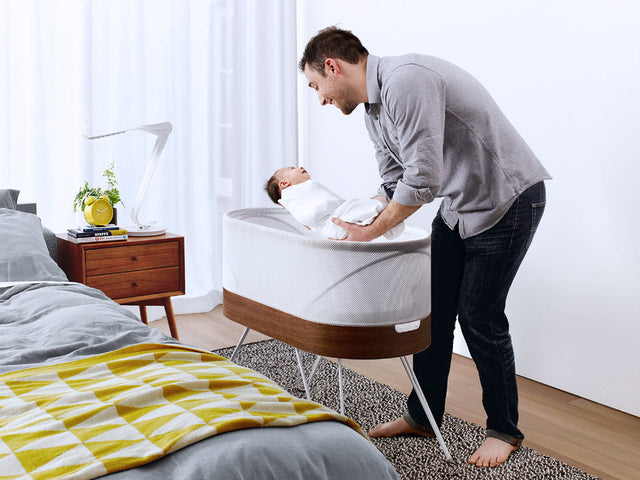Set Your Baby Up to Nap Like a Champ!

Daytimes ZZZs go a long way to keeping kids healthy and happy. Naps boost memory, restore energy and gentle demeanor, build attention skills, reinvigorate the immune system and help reduce stress. And smart parents know to treat naps as sacred. (Maybe they’ve seen their baby’s skipped-nap meltdown—and barely lived to tell the tale!) To get your kid be an all-star napper, try out these simple napping tips.
Baby Nap Tip #1: Find your rhythm.
When your infant reaches 1 month, creating some order to your day promotes good sleep and lets parents plan for downtime. Some doctors recommend scheduling a baby’s day in an “eat, play, sleep” sequence. Their idea is that uncoupling sleeping and feeding will train a baby to nod off again without milk in the middle of the night. This sounds logical … but it actually goes against a baby’s biology. Babies tend to snooze after feeds, no matter how much you prod and play with them. That’s why the following cycle makes more sense to me:
- After 1.5 to 2 hours of awake time, feed your love bug, and then put them to sleep.
- If the nap goes over 2 hours, wake your sweet pea up. (Long naps mean less eating during the day...and that leads to more hunger at night.)
As babies get older, they'll be able to stay awake for longer stretches between naps. Check out my guide to baby wake windows to learn how long you can expect your little one to go between snoozes.
Baby Nap Tip #2: Put your baby down before they're exhausted.
Most people think a baby’s ready to zonk out when their eyes get lidded and their head slumps against your shoulder. Actually, at that point they're overtired.
As is often said, “Sleep begets sleep.” And that's right ... that’s why the savviest parents put their babies to down to sleep at—or just before—the time they show these early signs of fatigue:
- Reduced activity, smiling and talking (or even increased frowning)
- Yawning
- Staring, blinking and rubbing the eyes
- Increased fussing
Flexibility is key. So don’t aim to put your little bug down at 1.5 hours by the minute. And if they seem wiped out, it’s fine to bend the “rules.” And, if they dozed off in your arms, use the wake and sleep technique when you lay them in their bassinet or sleeper, to let them float back to sleep on their own.
Baby Nap Tip #3: Use sleep cues at naptime.
Happiest Baby’s SNOO Smart Sleeper was made to help parents succeed at naptime, with a little help from technology. SNOO provide the right sleep cues—white noise and gentle womb-like motion—at the right time and in the right amount. One feature parents love about SNOO is that it automatically and gradually weans your baby off sound and motion by 6 months. Together SNOO and the wake and sleep technique are a dynamic duo for establishing healthy sleep habits for years to come.
Baby Nap Tip #4: Get ready for change!
One by one, these blissful naps will evaporate as your baby develops and grows. By 3 months your little one usually settles into three predictable naps (mid-morning, mid-afternoon and a short one in early evening.) Sometime within 6 to 12 months, your bub will shift to two naps a day. And between 12 to 24 months, they'll drop to just one. (More on transitioning from two naps to one.)
Yet, exactly when each of these naps will disappear is one of the least predictable aspects of your child’s sleep!